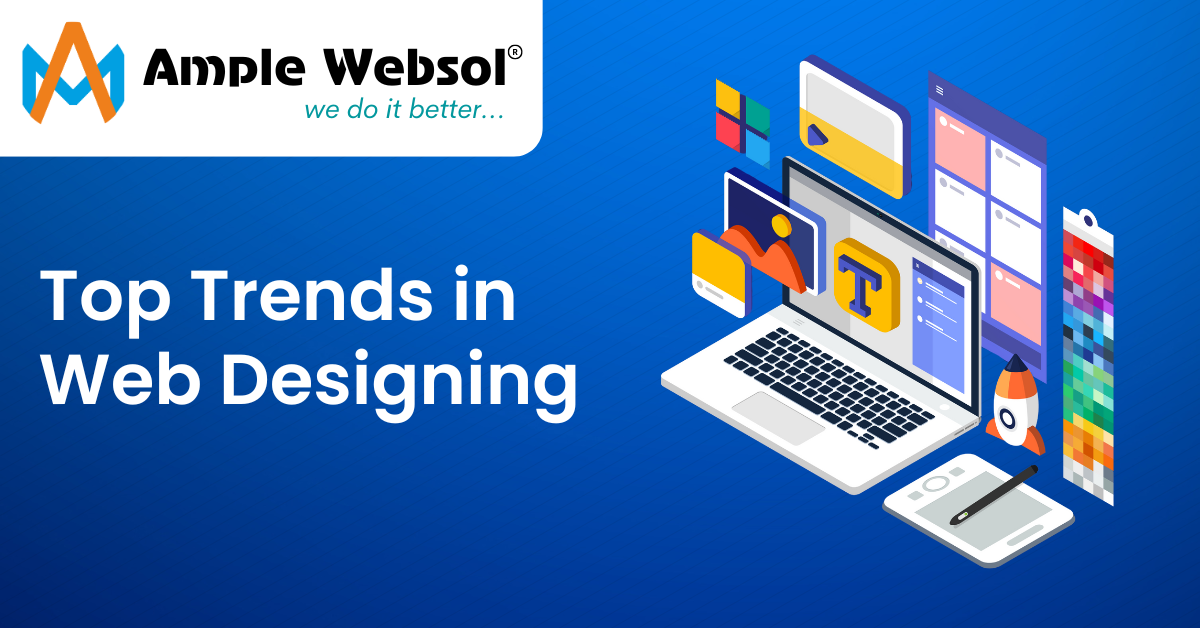Essential Tips for Selecting a Web Design Agency in Vadodara Finding the right web designing…

Top Trends in Web Designing
Table of Contents
hide
Top Trends in Web Designing for 2024
The world of web design is constantly evolving, driven by technological advancements and changing user preferences. As we move into 2024, several key trends are set to shape the landscape of web design. This blog explores the top trends that businesses and web designers should keep an eye on to stay ahead in the competitive digital market.
In addition to the highlighted trends, another noteworthy aspect shaping web design in 2024 is the emphasis on inclusivity and accessibility. Designers are increasingly recognizing the importance of creating websites that are usable by all individuals, regardless of their abilities or disabilities. This involves implementing features such as alternative text for images, keyboard navigation options, and ensuring color contrast for readability. By prioritizing inclusivity, businesses not only cater to a broader audience but also demonstrate their commitment to diversity and equality, fostering positive brand perception and user loyalty. Incorporating accessibility considerations into web design practices aligns with ethical principles and regulatory requirements, making it a crucial aspect to consider in the digital landscape of 2024 and beyond.
Minimalistic Design and Dark Mode
Minimalistic design continues to be a dominant trend, emphasizing simplicity and user-friendly interfaces. Dark mode, offering a sleek and modern look, reduces eye strain and saves battery life, making it increasingly popular among users.
Micro-Interactions and Animations
Micro-interactions and animations enhance user engagement by providing feedback and guiding users through the interface. These subtle animations make the user experience more interactive and enjoyable, improving overall satisfaction.
Voice User Interface (VUI)
With the rise of voice assistants like Alexa and Siri, integrating voice user interfaces into websites is becoming essential. VUI allows users to navigate and interact with websites through voice commands, offering a hands-free experience.
Augmented Reality (AR) and Virtual Reality (VR)
AR and VR are transforming web design by providing immersive experiences. These technologies allow users to interact with products and environments in a virtual space, enhancing engagement and offering innovative ways to present information.
AI and Machine Learning
AI and machine learning are revolutionizing web design by enabling personalized user experiences. These technologies analyze user behavior to offer customized content, recommendations, and design elements, improving user engagement and satisfaction.
Mobile-First Design
With the increasing use of mobile devices, mobile-first design is more critical than ever. Websites need to be fully responsive, ensuring seamless functionality and aesthetics across all devices, from smartphones to desktops.
Sustainable Web Design
Sustainability is becoming a significant concern in web design. Creating energy-efficient websites with optimized performance and reduced carbon footprints aligns with the growing focus on environmental responsibility.
Enhanced Cybersecurity Measures
As cyber threats become more sophisticated, robust security measures are crucial in web design. Implementing strong security protocols protects user data and builds trust, which is vital for maintaining a reputable online presence.
Personalization and Customization
Personalization is becoming increasingly important in web design, with users expecting tailored experiences based on their preferences and behaviors. This includes personalized content, recommendations, and user interfaces. Customization options allow users to adjust the website to their liking, further enhancing engagement and satisfaction.
FAQs
Minimalistic web design focuses on simplicity, using clean lines, ample white space, and essential elements to create a user-friendly interface.
Dark mode reduces eye strain, saves battery life on mobile devices, and offers a modern, sleek appearance that many users prefer.
AI enhances web design by analyzing user behavior to provide personalized content, recommendations, and design elements, improving user engagement.
Micro-interactions are small animations or feedback mechanisms that guide users through a website, making the user experience more interactive and enjoyable.
Mobile-first design ensures that websites are fully responsive and functional across all devices, crucial as more users access the internet via smartphones.
Conclusion
Staying updated with the latest trends in web design is essential for businesses to remain competitive in the digital landscape. Embracing trends like minimalistic design, micro-interactions, AI, and mobile-first approaches can significantly enhance user experience and engagement. By integrating these innovations, web designers and businesses can create dynamic, user-friendly websites that cater to the evolving needs of their audience in 2024.
Explore our Services!
Website Development Company in Vadodara, Digital Marketing Company in Vadodara, SEO Company in Vadodara, Google Ads Expert in Vadodara, Hire the Best Facebook Ads Specialist in Vadodara, E-Commerce Development Company in Vadodara, UI/UX Design & Development Service in Vadodara, Web Application Development Services in Vadodara, Mobile Application Development Services, Social Media Marketing Agency in Vadodara, Best Email Marketing Services in Vadodara


